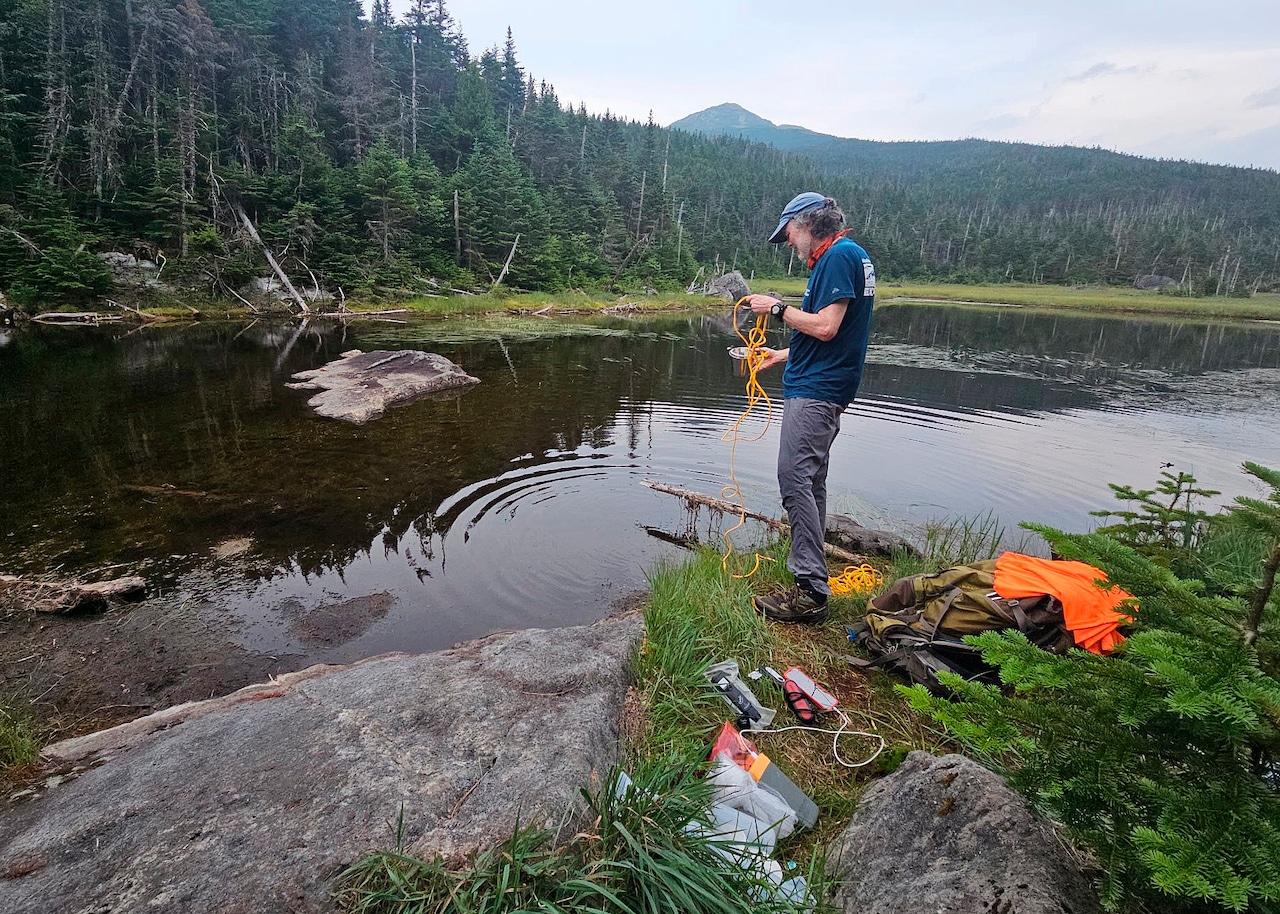Copyright syracuse.com

Foot traffic from hikers might be responsible for elevated levels of microplastics in two water bodies in the heart of the Adirondack High Peaks Wilderness, according to a new study. In July, volunteers from the nonprofit Adirondack Hamlets to Huts and Evergreen Business Analytics collected water samples from Lake Tear of the Clouds and Moss Pond to better understand how microplastics get into the Hudson River watershed. Both water bodies sit about ¾-mile apart in the shadow of Mount Marcy, the state’s highest peak. They are the highest sources of water in the Hudson River watershed. “Soft-soled trail running shoes, as well as synthetic fibers from outdoor clothing and gear, appear to be significant contributors to microplastics finding their way into these remote, otherwise pristine waters,” said Dr. Tim K. Keyes, a data scientist who helped collect water samples for the study. Whereas Lake Tear is accessible via a network of trails heavily traveled by High Peaks hikers, remote Moss Pond can only be reached by bushwhacking. Lab analysis of the water samples revealed two important data points: microplastic levels had nearly doubled in Lake Tear since volunteers last collected samples in 2023, while samples from Moss Pond were an order of magnitude lower than those in Lake Tear. “This work underscores the reality that even our most remote and iconic headwaters are not immune to human impact,” said Dr. Joe Dadey, executive director of Adirondack Hamlets to Huts. “Lake Tear of the Clouds is a sacred source of the Hudson, yet our research shows it is already carrying the imprint of microplastics—likely from the very visitors who revere it," Dadey said. Keyes theorizes that while some of the microplastic pollution was carried to these water bodies on wind or precipitation, that alone can’t explain the large difference in microplastic levels between accessible Lake Tear and remote Moss Pond. “It appears that a major contributor may be treadwear, the boot or shoe treads disintegrating,” Keyes said, “just like when we drive down the road and a known major source of microplastics in the front country is our tires disintegrating.” The number of visitors to the Adirondack region spiked during the Covid pandemic and has remained strong. Likewise, the number of 46ers—hikers who have climbed all Adirondack High Peaks over 4,000 feet—has more than doubled since 2013, when Keyes himself made the roster. “It’s reasonable to assume that the number of hikers not pursuing the 46 High Peaks but still visiting the area has escalated similarly,” Keyes said. He noted that the New York State Department of Environmental Conservation and the Adirondack Mountain Club report that their Summit Stewards educated almost 32,000 hikers in 2024. Keyes said he came up with the idea to mix science with recreation after hiking the Adirondack 46 and the Catskills 35. “I thought, why am I only hiking while I’m out here?” Keyes said. “So I started doing air quality and water quality measurements, and teamed up with the appropriate experts in the field to support me in doing scientific measurement in the field.” Both the first expedition to collect water samples in 2023, and the follow-up expedition in July, were citizen science initiatives that included students and teachers. What are microplastics? Microplastics measure between 1 nanometer and 5 millimeters wide. One nanometer is the width of a DNA strand, and 5 millimeters is about the width of a pencil eraser. Microplastics mostly come from the disintegration of everyday objects: car tires, building materials, food containers, and so on. We inhale microplastics when we breathe and swallow them at meals. On the smallest scale, nanoplastics can even be absorbed by the skin. The health and environmental impacts of microplastics aren’t fully understood, but studies have linked them to inflammation, immune system impairment, altered metabolic function, abnormal organ development, cell damage, and more. Every ecosystem on the planet now contains microplastics. Research has linked them to stunted growth and reduced reproductive ability in animals, among other harmful effects. Preventive measures Adirondack Hamlets to Huts and its partners recommend the following steps to avoid bringing microplastics into watersheds:



